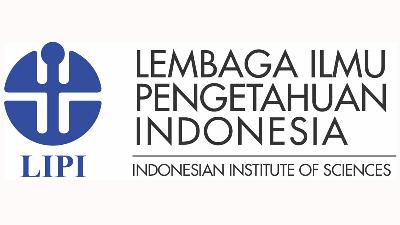Analyzing the Rapid Mixing Time Effect on Coagulation – Flocculation Process using Moringa Oleifera
Abstract
Full Text:
PDFReferences
Effendi, H. (2003). Telaah Kualitas Air. Yogyakarta: Kanisius.
Janelle, C. dan Wei, Z. (2004). Review Article: Manganese Toxicity upon Overexposure. Indiana – USA: John Wiley & Sons.
Parulian, A. (2009). Monitoring dan Analisis Kadar Aluminium (Al) dan Besi (Fe) Pada Pengolahan Air Minum PDAM Tirtanadi Sunggal.. Medan Universitas Sumatera Utara (USU).
Cohen, J. M dan Hanna, S. A. (1971). Coagulation and Flocculation. Water Quality Treatment 3rd. USA: The American Water Works Association Inc.
Larry, D. dan Joseph. (1982). Process Chemistry For Water And Wastewater Treatment. Enyglewood Cliffs. New Jerse. 143-149.
Byun, S., Oh, J., Lee, B.Y dan Lee, S. (2005). Improvement of coagulation efficiency using instantaneous flash mixer (IFM) for water treatment. Colloid and Surface A: Phsycochemical Engineering Aspects 268, 104-110.
Nugroho, B. A., Miswadi, S. S., dan Santosa, N. B. (2014). Penggunaan Serbuk Biji Kelor untuk Menurunkan Kadar Pb, Kekeruhan dan Intensitas Warna. Indonesian Journal of Chemical Science. Semarang: Universitas Negeri Semarang.
Srawaili, N. (2008). Efektifitas Biji Kelor (Moringa oleifera) dalam Menurunkan Kekeruhan, Kadar Ion Besi dan Mangan dalam Air. Bandung: Institut Teknologi Bandung.
Yuliastri, I. R. dan Hendrawati. (2010). Penggunaan Serbuk Biji Kelor (Moringa oleifera) Sebagai Koagulan dan Flokulan dalam Perbaikan Kualitas Air Limbah dan Air Tanah. Jakarta: UIN Syarif Hidayatullah..
Trestianingrum, R., Sarini R., dan Mumun N. (2013). Perbandingan Efektifitas Koagulan Tawas dan Biji Kelor Terhadap Kadar BOD pada Air Limbah Jasa Cuci Pakaian. Kediri: Universitas Nusantara PGRI Kediri.
Januardi, R., Setyawati. T. R. dan Mukarlina. (2014). Pengelolaan Limbah Cair Tahu Menggunakan Kombinasi Serbuk Biji Kelor (Moringa Oleifera) dan Asam Jawa (Tamarindus Indica). Pontianak: Universitas Tanjungpura.
Rusdi, T. B., Sidi, P., Pratama R. (2014). Pengaruh Konsentrasi dan Waktu Pengendapan Biji Kelor terhadap pH, Kekeruhan, dan Warna Air Waduk Krenceng. Cilegon: Universitas Tirtayasa.
Ramadhani, S., Sutanhaji, A. T. Dan Widiatmono, B. R. (2013). Perbandingan Efektivitas Tepung Biji Kelor (Moringa Oleifera), Poly Aluminium Chloride (PAC) dan Tawas sebagai Koaglan untuk Air Jernih. Jurnal Keteknikan Pertanian Tropis dan Biosistem. Vol. 1 No. 3 pp. 186-193.
Asri, R. F. (2015). Analisis Pengaru Suhu terhadap Kemampuan FeCl3 sebagai Koagulan. Skripsi S1 Jurusan Teknik Lingkungan Fakultas Teknik. Padang: Universitas Andalas.
Muyibi, S., dan Evison, L. (1995). Moringa oleifera Seeds for Softening Hardwater. Wat. res. Volume 29 nomor 4.
Bratby J. (2006). Coagulation and Floculation in Water and Waste Water Treatment. London: IWA.
Yukselen, M. A dan Gregory, J. (2004). The Effect of Rapid Mixing on the Break Up and Re-formation of Flocs. Journal of Chemical Technology and Biotechnology 79 pp.782-788.
Said, N. I. (2003). Metoda Praktis penghilangan Zat Besi dan Mangan Di Dalam Air Minum. Jakarta : Kelair – BPPT.
Reynold, T. D. (1982). Unit Operation and Process In Environmental Engineering. Monterey-California.
Rossini, M., Garrido, G. dan Galluzo, M. (1990). Optimization of the coagulation-flocculation treatment: Influenced of rapid mixing parameters. Water Research 33, 1817-1826.
Yu, W. Z., Gregory, J., Campos, L. dan Li G. (2011). The Role of Mixing Conditions on Floc Growth, Breakage and Re-growth. Chemical Engineering Journal. Departement of Civil, Environmental and Geomatic Engineering. London: University College London.
Yan, W., Yu, G. B., Ming, X.X., Ying, X. W., dan Ying, X. G. (2008). Characterization of Floc Size, Strength and Structure in Various Aluminium Coagulants Treatment. China: Shandong University.
Makhmudah, N dan Notodarmojo, S. (2009). Penyisihan Besi-Mangan, Kekeruhan dan Warna Menggunakan Saringan Pasir Lambat Dua Tingkat pada Kondisi Aliran Tak Jenuh Studi Kasus: Air Sungai Cikapundung. Bandung: Institut Teknologi Bandung.
Refbacks
- There are currently no refbacks.

This work is licensed under a Creative Commons Attribution 3.0 License.
Supported by :


 Indexed by :
Indexed by :




